
Piyush

Customer acquisition is essential for business growth and success. A steady stream of new customers prevents stagnation, even for reputable brands. By implementing effective strategies, businesses can expand their market reach, increase revenue, and remain competitive.
For startups, acquiring customers builds credibility and traction, while established enterprises rely on it for ongoing growth. A data-driven customer acquisition strategy supports long-term sustainability and profitability. By using various channels and optimizing approaches, businesses can create a strong pipeline of prospective customers who become loyal customers over time.
Table of Contents:
A customer acquisition strategy is a plan that guide how a business aims to attract and convert potential customers into paying clients. This strategy includes a combination of marketing techniques, sales tactics, and customer engagement methods designed to maximize the effectiveness of reaching the target audience.
Gaining new customers for your company is vital to increasing your sales, whether you are an e-commerce startup or a large corporation. Here, we’ll explore why customer acquisition strategy is important for businesses.
By doing so, businesses can increase their return on investment significantly. Demonstrating credibility through data-driven insights, such as targeting specific demographics or segments, can help businesses achieve higher ROI and thrive in today’s competitive market.
This approach is supported by evidence showing how optimizing resource allocation leads to improved efficiency and outcomes. By implementing resource optimization strategies, marketing teams can achieve their goals more effectively and efficiently.
This approach is backed by data illustrating how tracking KPIs helps in identifying strengths and areas for improvement, leading to informed decision-making. By setting measurable targets and tracking progress against them, organizations can gain credibility and ensure that they are making data-driven decisions.
The promise of sustainable growth can be achieved by focusing on customer relationships and prioritizing them. The credibility of this approach can be established by showcasing testimonials, case studies, or customer feedback that demonstrates how prioritizing customer relationships leads to sustainable business growth.

To prepare for an acquisition, it is essential to lay down the groundwork effectively. Here is a step-by-step guide to help you set up the stage:
In today’s digital landscape, your website serves as the center point of your online presence. It acts as the primary destination where conversions happen, and every click and interaction presents an opportunity to turn visitors into loyal customers. Here are top customer acquisition strategies that can help your business to increase customer acquisition.
Gift cards can be an efficient way to improve your customer acquisition strategy by attracting new consumers, retaining existing ones, and boosting sales. Gift cards are popular with both givers and receivers, providing a chance to show off your company to new customers and encourage repeat business.
Implementing a strong gift card program can help you increase brand visibility and customer loyalty. Use innovative gift card software to improve operations and maximize the effect of your campaigns.
Search Engine Optimization (SEO) is a crucial element of any effective customer acquisition strategy. It aims to boost your website’s presence on search engine results pages (SERPs). The main goal of SEO is to improve your website’s ranking on search engines such as Google, Bing, or Yahoo so that it appears prominently when users search for relevant keywords or phrases.
However, SEO goes beyond simply including keywords in content. It includes a range of strategies and techniques designed to optimize various aspects of your website to enhance its overall performance and user experience.
This involves configuring the website structure and setup for easy navigation and indexing, creating high-quality, relevant content that meets the needs of your target audience, optimizing technical aspects such as page loading speed and mobile responsiveness, building authoritative inbound links, and enhancing the overall user experience through intuitive design and navigation.
In essence, SEO is a comprehensive approach to refining your website for both search engines and users, resulting in improved visibility, increased organic traffic, and ultimately, enhanced customer acquisition.
Paid advertising is an essential strategy for customer acquisition, ensuring businesses can reach their target audience effectively. It involves investing in various channels and platforms to promote products or services and reach a wider audience. This can include pay-per-click (PPC) advertising, display ads, social media ads, sponsored content, and influencer partnerships.
Paid advertising allows businesses to target specific demographics, interests, and behaviors, maximizing the visibility and impact of their marketing campaigns. By allocating advertising budgets strategically and monitoring campaign performance, businesses can optimize their ROI and achieve higher customer acquisitions through increased brand exposure and conversions.
Content marketing revolves around the creation and distribution of valuable, relevant content to attract and engage a specific target audience. This content can take various forms, including blog posts, articles, infographics, videos, and podcasts. The key is to provide informative, entertaining, or educational content that addresses the needs and interests of the target audience.
By establishing authority and building trust through valuable content, businesses can nurture relationships with potential customers, ultimately leading to conversions and customer acquisitions as part of their strategies for customer acquisition.
Blogging is a cornerstone of content marketing, involving the regular publication of articles or posts on a website. Blogs serve multiple purposes, including providing valuable information to readers, improving search engine visibility through targeted keywords, and fostering engagement with the audience.
By consistently delivering high-quality, relevant content, businesses can attract organic traffic, establish thought leadership in their industry, and create opportunities for customer acquisitions through customer acquisition strategies, lead generation, and conversions.
Social media marketing is one of the most effective strategy for customer acquisition. It involves utilizing social media platforms to connect with audiences, increase brand awareness, and encourage engagement and conversions. This process entails developing and sharing content that is specifically tailored to each platform, interacting with followers, and executing targeted advertising campaigns.
By using social media channels in a strategic manner, businesses can expand their reach, develop relationships with potential customers, and direct traffic to their website or other conversion channels, ultimately leading to increased customer acquisitions and stronger brand loyalty.
For example, Lush Cosmetics frequently posts product demos on Instagram Stories, demonstrating how their latest skincare products work. This approach not only educates followers about product usage but also motivates them to explore Lush’s offerings further, potentially leading to purchases and increased brand loyalty.
Live chat and chatbots offer real-time assistance to website visitors, allowing businesses to engage with potential customers, answer their queries, and guide them through the conversion process. By providing instant support and personalized interactions, companies can enhance the customer experience and address any concerns or objections that may arise during the purchasing journey.
Live chat and chatbots are essential components of a customer acquisition strategy, as they can also collect valuable customer data and insights, which can be used to optimize marketing strategies and improve customer acquisitions over time.
Video content creation has become a crucial aspect of any customer acquisition strategy in today’s digital landscape. Platforms like YouTube Shorts, Instagram, and TikTok can significantly increase a business’s reach and engagement, offering diverse formats and audiences.
Businesses can tailor their content to specific demographics and preferences, driving quick engagement and brand promotion. Video content enables businesses to connect with audiences on a deeper level, ultimately driving customer acquisitions and fostering brand loyalty.
Traditional advertising encompasses offline channels such as print, radio, television, and outdoor media to reach a broad audience and increase brand visibility. While digital marketing has become increasingly prevalent, traditional advertising still offers advantages such as mass reach, brand recognition, and credibility.
By leveraging conventional advertising channels strategically and integrating them with digital marketing efforts, businesses can enhance their overall marketing mix and effectively reach target audiences across multiple touchpoints.
Traditional advertising can complement online strategies, reinforcing brand messaging and driving customer acquisitions through increased awareness and engagement.
Gated content refers to valuable resources or premium content that are made accessible to users only after they provide certain information, such as their email address or contact details. This strategy is commonly used for lead generation purposes, as businesses can offer exclusive content in exchange for permission to follow up with potential customers.
For example, publishers like Forbes often employ gated content strategies by offering exclusive articles or industry reports accessible only to users who provide their email addresses or subscribe to their newsletter.
By providing compelling gated content, organizations can attract qualified leads, develop connections through targeted email marketing campaigns, and ultimately boost conversions and acquire customers.
This makes gated content an effective customer acquisition strategy, allowing businesses to utilize valuable resources or premium material to attract consumers to provide their information, thus initiating the conversion process from users to customers.
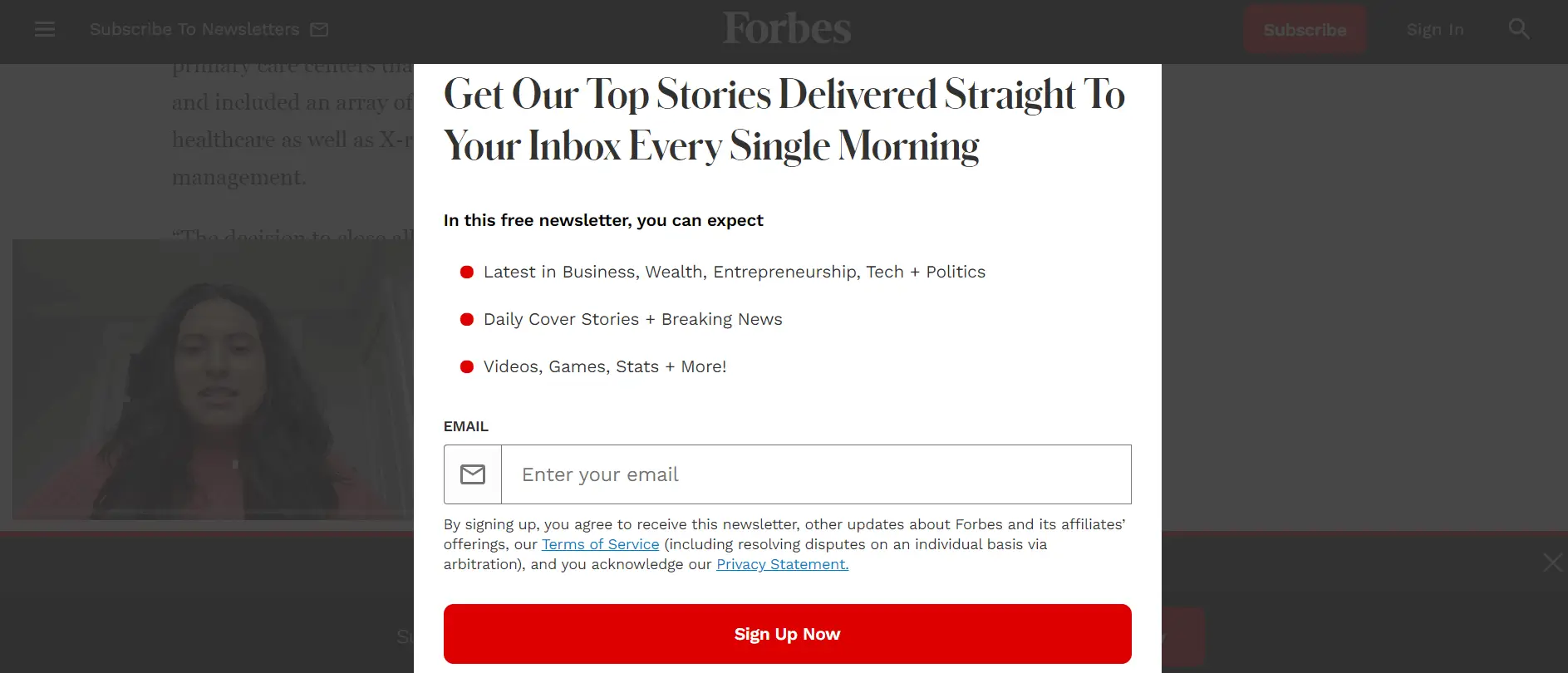
Product pricing plays a crucial role in customer acquisition strategy, as it directly impacts consumer perceptions of value and purchase decisions. Businesses must carefully consider factors such as production costs, competitor pricing, and market demand when determining pricing strategies. By offering competitive prices, discounts, or special promotions, businesses can attract price-sensitive customers and incentivize purchases.
Conversely, premium pricing strategies may appeal to customers seeking high-quality products or exclusive benefits. Effective pricing strategies align with the target market’s preferences and purchasing behavior, ultimately influencing customer acquisitions and revenue generation.
Events marketing involves hosting or participating in events such as trade shows, conferences, workshops, or webinars to showcase products or services, network with potential customers, and generate leads. Events provide valuable opportunities for face-to-face interactions, product demonstrations, and relationship building, allowing businesses to engage with prospects at various stages of the buying journey.
By creating memorable experiences and offering incentives such as discounts or giveaways, companies can attract attendees, collect contact information, and nurture leads toward conversion, ultimately driving customer acquisitions and revenue growth.
Influencer partnerships involve collaborating with individuals or personalities with a significant following and influence within a specific niche or industry. By leveraging the credibility and reach of influencers, businesses can amplify their brand messaging, reach new audiences, and drive customer acquisitions.
Influencers can promote products or services through sponsored content, product reviews, or endorsements, leveraging their authority and engagement to influence purchasing decisions.
For example, Puma has used Usain Bolt’s mage and influence to produce signature shoe lines and reach a larger audience of sports enthusiasts and fans. Bolt’s partnership with Puma increases the company’s exposure and credibility while also attracting new customers who want to be like Bolt and achieve the same success.
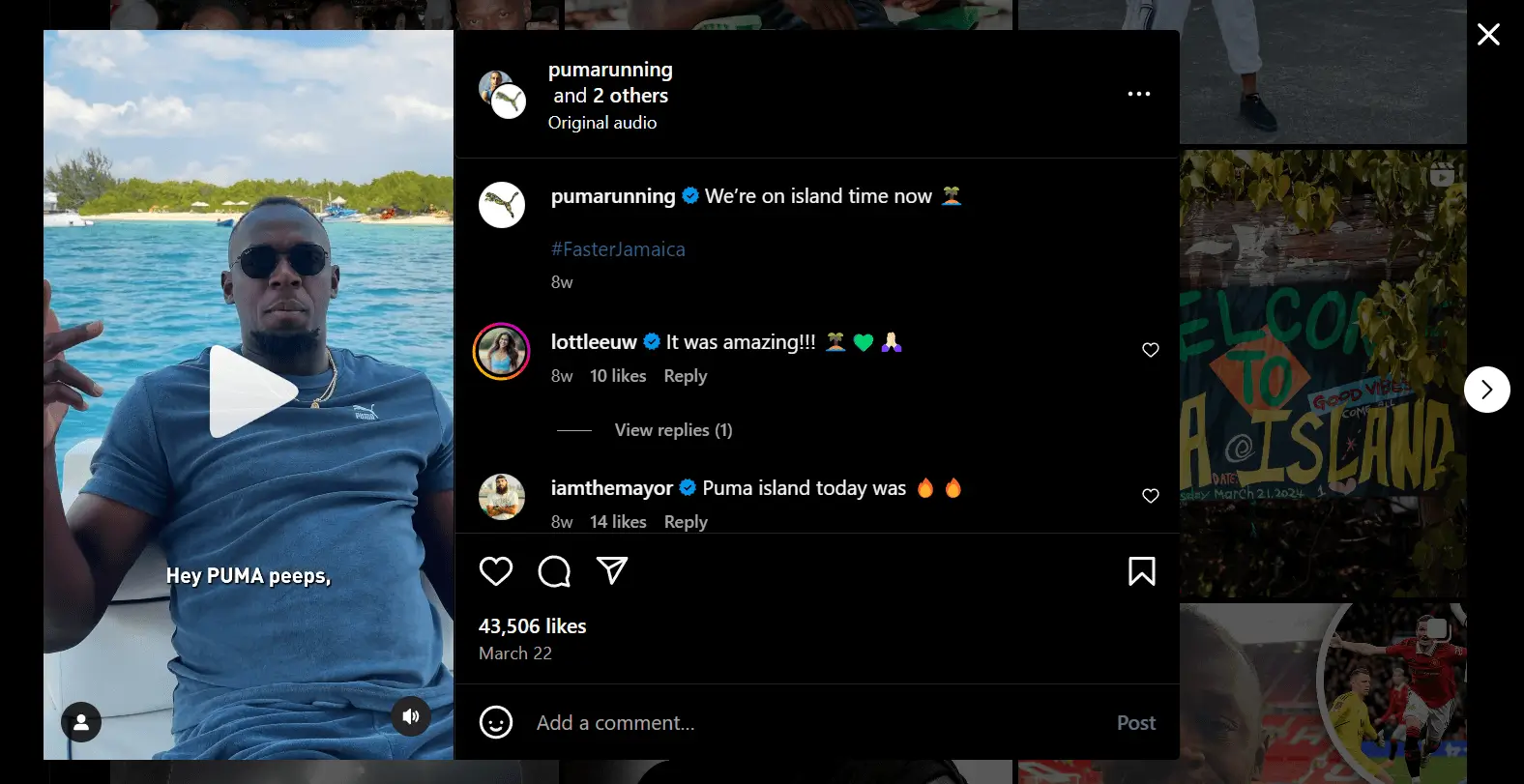
Free trials allow potential buyers to try a product or service before making a purchase decision, usually for a limited time. By removing barriers to entry and allowing users to test-drive the offering, businesses can showcase its value and alleviate any doubts or hesitations.
Free trials can serve as effective lead generation tools, as they capture contact information and allow companies to follow up with targeted messaging and incentives to convert trial users into paying customers.
By offering a seamless and rewarding trial experience, businesses can drive customer acquisitions and foster long-term relationships with satisfied customers. For example, Amazon Prime, offered by the e-commerce giant Amazon, is a subscription service that provides various benefits to its members, including free two-day shipping, access to streaming services like Prime Video, unlimited photo storage, exclusive deals, and more.
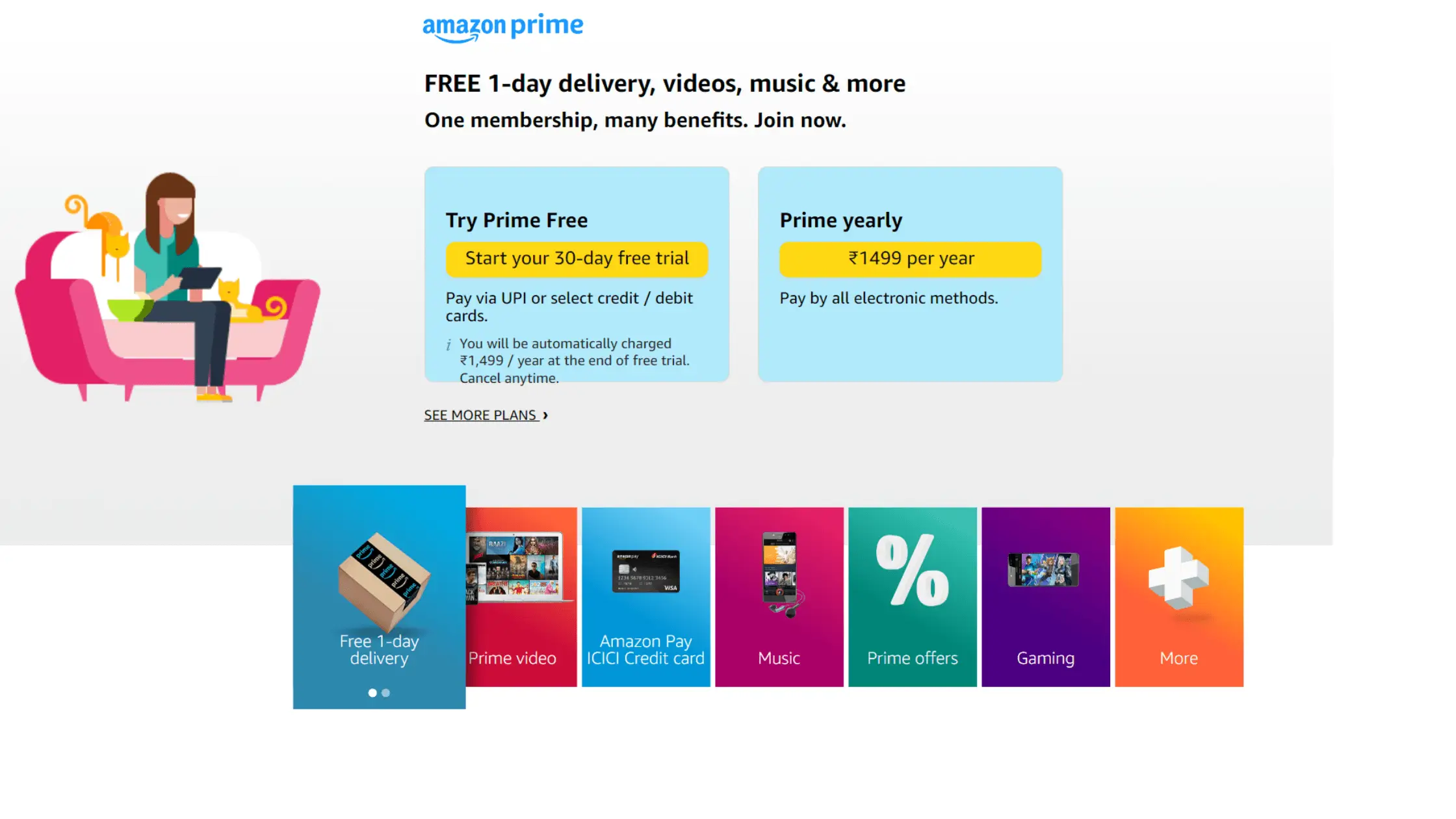
Hosting giveaways or contests involves offering prizes or rewards to participants who engage with the brand through actions such as liking, sharing, or commenting on social media posts, details on a website, subscribing to newsletters, or referring friends.
Giveaways generate excitement, encourage user participation, and increase brand visibility and engagement, making them effective customer acquisition strategies.
Businesses can attract a wider audience, collect valuable leads, and drive customer acquisitions by offering desirable prizes and promoting the giveaway across multiple channels. Giveaways provide an opportunity to showcase products or services, generate buzz, and cultivate relationships with potential customers, ultimately leading to increased brand awareness and revenue growth.
For example, Corkcicle, a popular brand specializing in stylish drinkware and accessories, partners with EPCOT at Disney World to offer exclusive giveaways, creating excitement among Disney fans and expanding Corkcicle’s brand exposure. This strategy helps strengthen Corkcicle’s presence in the lifestyle and travel sectors while fostering engagement and loyalty among their customer base.
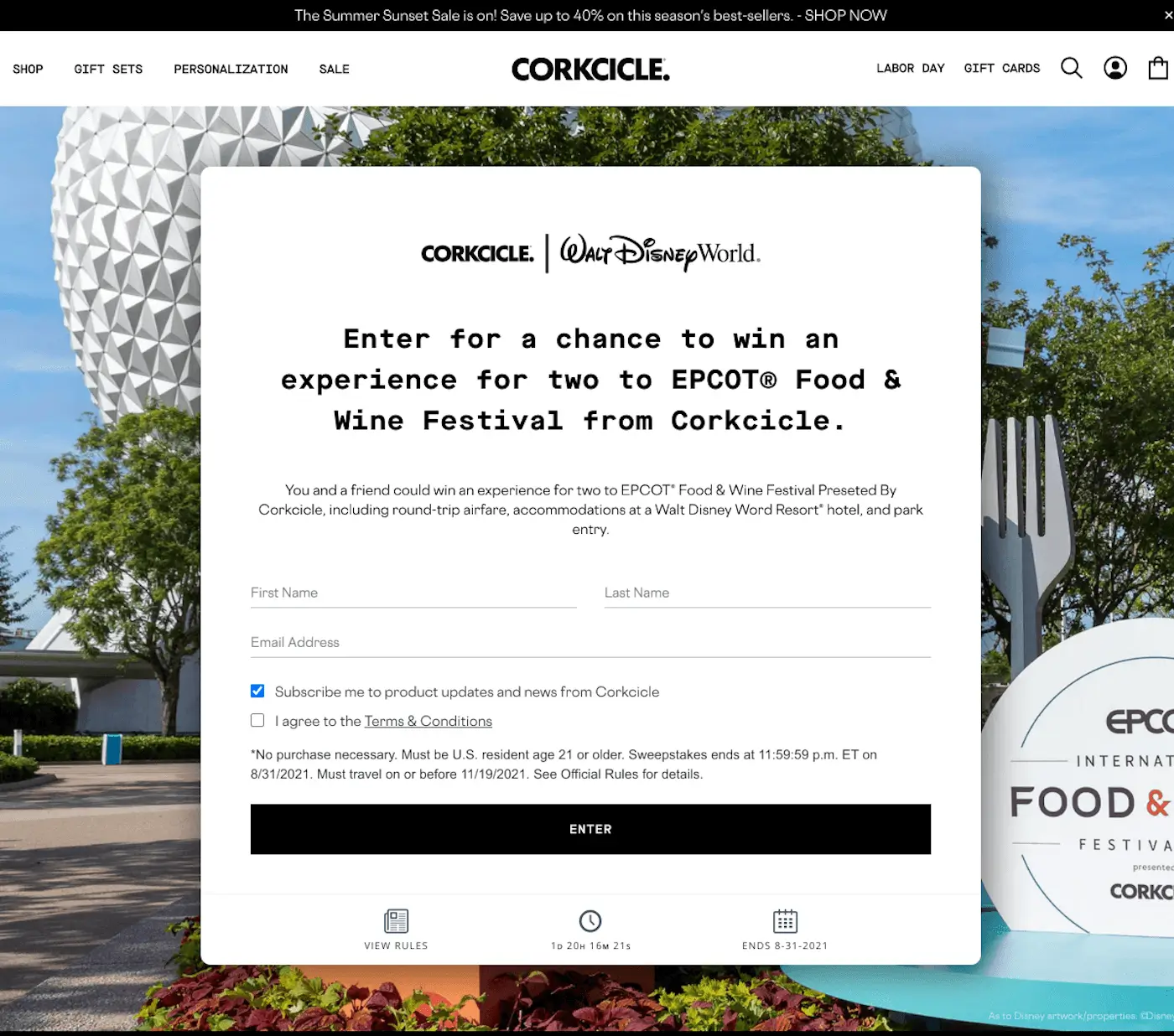
Affiliate marketing involves partnering with individuals or entities (affiliates) who promote products or services in exchange for a commission on sales generated through their referral efforts. Affiliates can include bloggers, influencers, content creators, or businesses with complementary offerings.
By leveraging the reach and influence of affiliates, companies can expand their reach, drive targeted traffic, and increase customer acquisitions cost-effectively. Affiliate marketing operates on a performance-based model, with commissions tied directly to measurable results, making it a scalable and efficient strategy for driving revenue growth, expanding market reach, and optimizing customer acquisition strategies.
Integrating discounts and sales into your customer acquisition strategy can significantly boost your potential to attract consumers and convert them.
By offering special pricing or promotions to attract potential customers to engage with your business, this strategy creates an incentive for people to try your products or services, potentially leading to increased interest and conversions.
For example, Businesses can leverage platforms like 99minds for effective discount and sales strategies. Through this partnership, companies can access expertise in market analysis and personalized discount planning, enabling them to offer tailored deals to their target audience and drive user acquisition through incentives and promotions.
Data analytics helps with focused marketing initiatives and conversion rate optimization by offering insightful information about consumer behavior. Embracing automation and technology speeds customer acquisition while also fostering stronger relationships and long-term loyalty.
Podcast sponsorships involve partnering with podcast creators to sponsor episodes or segments, typically through pre-roll, mid-roll, or post-roll ads. Podcasts have become increasingly popular as a medium for reaching engaged audiences with targeted messaging.
By aligning with relevant podcasts within their niche or industry, businesses can leverage the host’s credibility and rapport with listeners to promote their products or services as part of their customer acquisition strategy. Podcast sponsorships offer a unique opportunity to reach a highly targeted audience and drive customer acquisitions through authentic endorsements and compelling storytelling.
Referral programs are a great way for businesses to attract new customers by incentivizing existing ones to refer their friends, family, or colleagues. Such programs offer rewards or discounts to customers who refer others to the business. Word-of-mouth referrals are an effective way to drive customer acquisition because they rely on existing relationships and trust.
Referral programs serve as an invaluable customer acquisition strategy for businesses, leveraging existing customer relationships to attract new clientele. By making it easy for customers to share their positive experiences and offering incentives for referrals, businesses can tap into their loyal customer base and expand their reach through customer referrals.
In addition to attracting new customers, referral programs can also foster customer loyalty and advocacy, driving long-term growth and sustainability. 99minds is a great example of a referral platform that helps businesses boost their sales organically and foster customer loyalty.
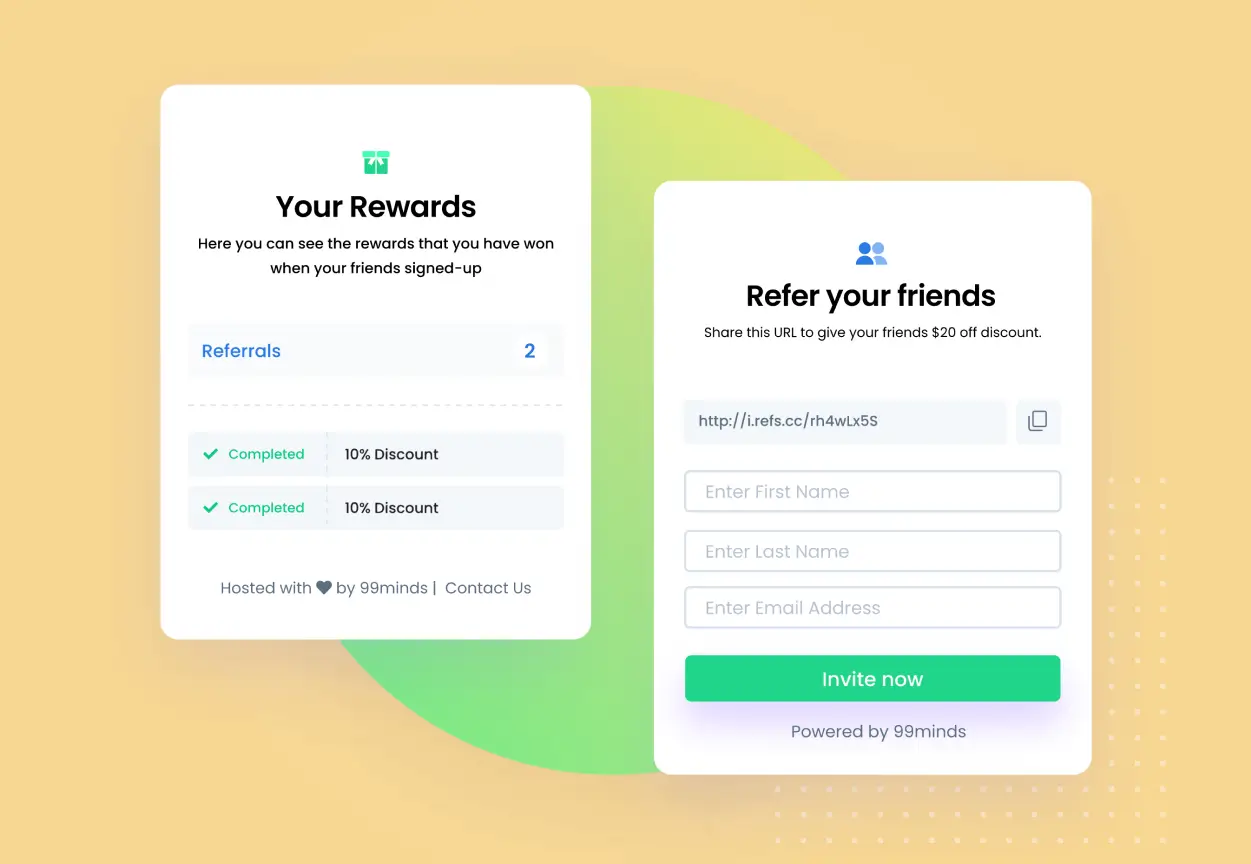
A multichannel strategyinvolves leveraging multiple marketing channels and touchpoints to reach customers at various stages of the buying journey. This may include online channels such as websites, social media, email marketing, and paid advertising, as well as offline channels such as events, print media, and direct mail.
By diversifying their marketing efforts across multiple channels, businesses can maximize their reach, engage with audiences across different platforms, and increase the likelihood of customer acquisitions. A cohesive multichannel strategy ensures consistent messaging and a seamless customer experience across all touchpoints, driving conversions and revenue growth.
Community engagement initiatives involve actively participating in and contributing to online or offline communities relevant to the brand’s target audience, as well as integrating customer acquisition strategies.
This can include engaging in discussions on social media platforms, hosting webinars or workshops, sponsoring local events, or volunteering for charitable causes.
By building relationships and fostering a sense of community, businesses can establish trust, credibility, and brand loyalty among community members. As a customer acquisition strategy, Community engagement initiatives provide opportunities for brand exposure, word-of-mouth referrals, and customer acquisitions through authentic connections and shared values. By prioritizing community engagement, businesses can cultivate a loyal customer base and drive sustainable growth over time.
Although this is a technique that predates the Internet, it is still one of the most successful consumer acquisition strategies. It allows you to stay in front of your target audience while also promoting your content, discounts, and product details. It’s also the quickest and most convenient way to communicate with and attract new customers.
Sending personalized emails to people based on where they are in the customer acquisition process is a perfect way to do this. As a result, anyone in the first two phases is more likely to be suitable for content that will initiate customer interaction.
An effective customer acquisition strategy helps you transform new customers into focused brand advocates, increasing customer retention and fulfillment along the way. Use these digital strategies to develop a customer acquisition strategy that helps your company and increases your customer base. Don’t be hesitant to attempt new things and think outside the box. If you’re a growing eCommerce or retail business, working with experts like 99minds can help boost customer acquisition with their all-in-one gift card and loyalty program.